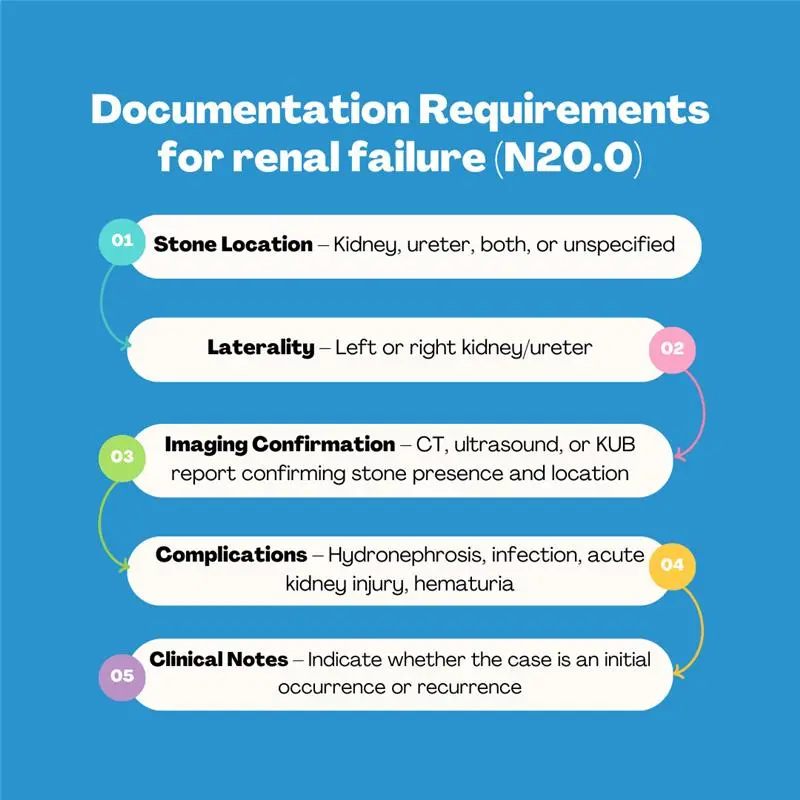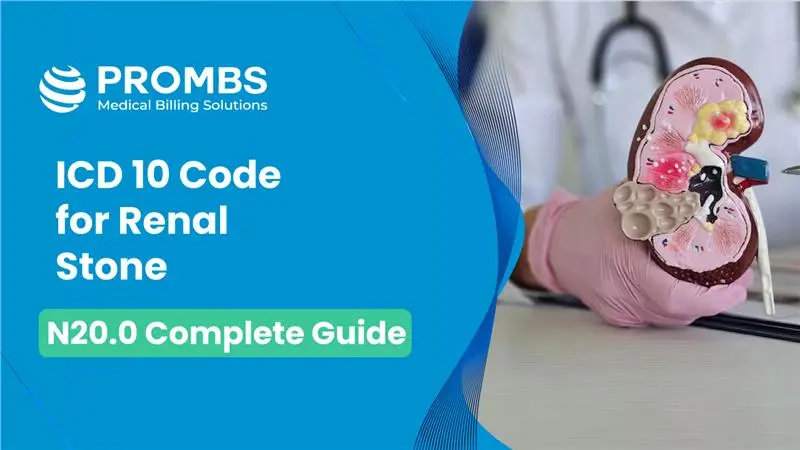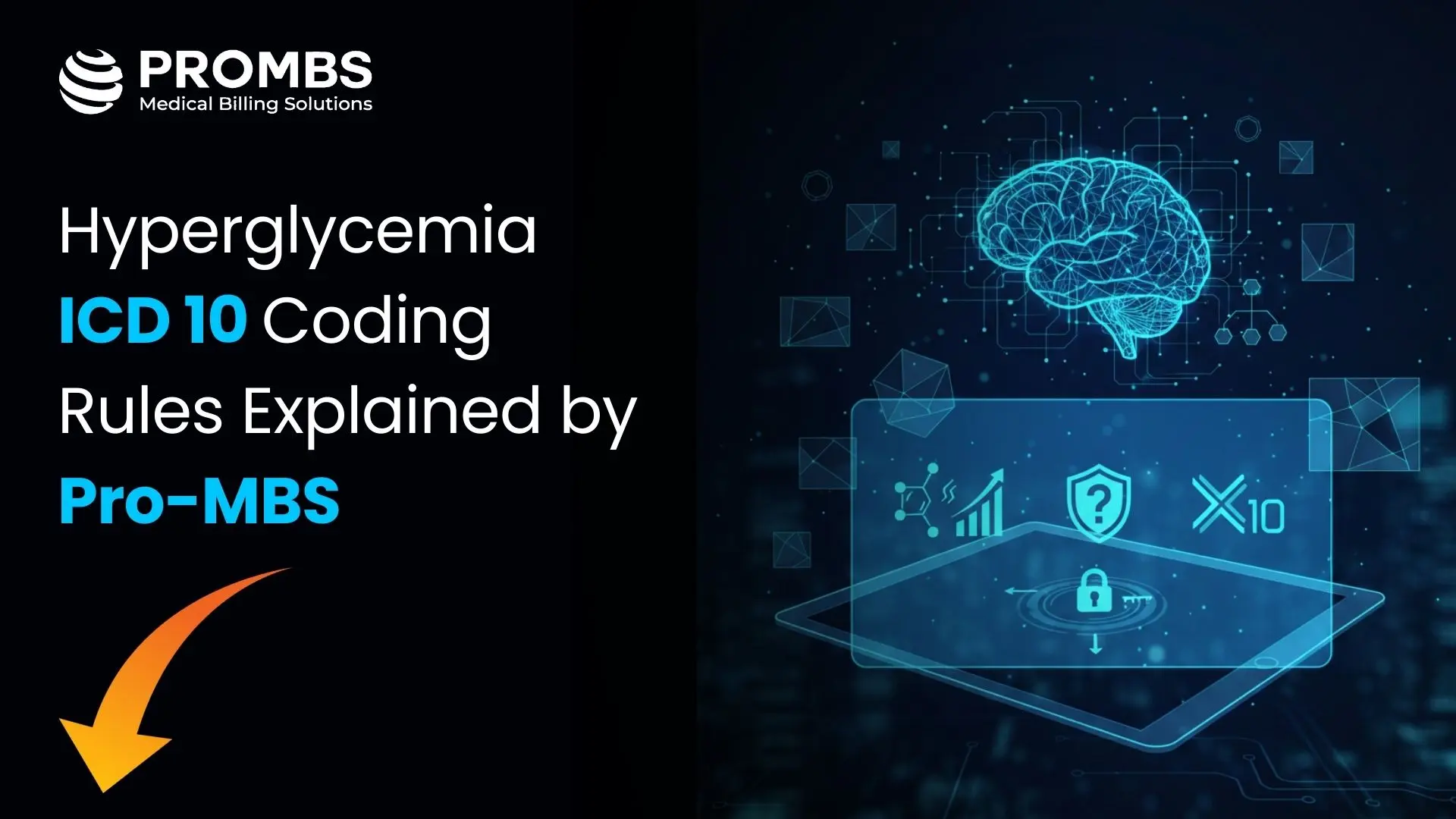Renal stones also referred to as kidney stones, nephrolithiasis, or urinary calculi are among the most common diagnoses in urology and nephrology. Accurately assigning the ICD 10 code for renal stone is essential for proper reimbursement, ensuring payer compliance, and maintaining the integrity of clinical records.
In ICD-10-CM, renal stone coding falls under the N20 ICD 10 code range for calculi of the kidney and urinary tract. Selecting the correct diagnosis code requires confirmation of stone location through diagnostic imaging or surgical reports and a detailed understanding of ICD-10 coding guidelines. Using the wrong code, or failing to document the stone’s exact location, can lead to denials, delays, or underpayments.
This guide outlines the ICD 10 code for kidney stone, explains related codes, covers documentation requirements, highlights common denial triggers, and provides best-practice recommendations for accurate coding and claims submission.
What Is a Renal Stone?
A renal stone also called a kidney stone or nephrolithiasis is a solid crystalline mass formed from mineral deposits in the kidney, typically composed of calcium oxalate or calcium phosphate. Stones may remain in the kidney or move into the ureter, where they can cause obstruction, severe pain, hematuria, hydronephrosis, or acute kidney injury.
From a coding perspective, ICD-10-CM uses the term “Calculus of kidney” for this condition. The assigned code must reflect the exact anatomical location of the calculus kidney, ureter, both, or unspecified. Confirming location with imaging such as CT scan, ultrasound, or KUB X-ray is critical before assigning an ICD-10-CM code.
What Is the ICD-10 Code for Renal Stone?
The primary ICD 10 code for calculus of kidney is:
- N20.0 ICD 10 – Calculus of kidney
Use this code when the stone is located in the kidney only (Calculus of kidney per ICD-10-CM tabular list. Documentation should specify “renal calculus” or “kidney stone” and confirm via diagnostic imaging or operative note.
Code Breakdown
| ICD-10-CM Code | Description | Use When |
|---|---|---|
| N20.0 | Calculus of kidney | Stone located only in the kidney |
| N20.1 | Calculus of ureter | Stone located only in the ureter |
| N20.2 | Calculus of kidney with calculus of ureter | Stones present in both kidney and ureter |
| N20.9 | Urinary calculus, unspecified | Location not documented or unclear |
Coding Tip:
Codes N20.0, N20.1, and N20.2 carry an Excludes 1 note for N13.2 – Hydronephrosis with calculus of kidney and ureter. These codes cannot be reported together for the same encounter.
If hydronephrosis with calculus is documented, assign N13.2 instead of any N20.x code. N13.2 is a combination code that fully describes both the stone and the hydronephrosis, so reporting it alongside an N20.x code for the same visit is noncompliant and will result in an automatic denial.
Related Codes
When coding for urinary calculi, additional ICD-10-CM codes may be required to fully capture the patient’s clinical picture. These codes either replace the primary ICD 10 code for renal stone in specific scenarios or are reported alongside it when documented.
| ICD-10-CM Code | Description | Usage Criteria |
|---|---|---|
| N13.2 | Hydronephrosis with urinary calculus obstruction | Report instead of N20.x when hydronephrosis is present |
| R31.0 | Gross hematuria | Report as a secondary code only when visible blood in urine is documented and clinically linked to the stone by the provider (e.g., “due to” or “associated with” the calculus). |
| N17.9 | Acute kidney failure, unspecified | Report as a secondary code only if acute renal failure is documented and provider notes link it to the stone diagnosis. |
| N23 | Unspecified renal colic | Use when renal colic is present but no stone is confirmed |

Documentation Requirements
The term “entity identifier” in medical billing refers to any unique code or number used to specify a particular party’s role and identity in the healthcare claim process. These identifiers appear in electronic data interchange (EDI) transactions, most notably in the ANSI X12 837 claim format, which is mandated by HIPAA for standardizing electronic claim submissions. They help payers, clearinghouses, and billing systems distinguish between multiple parties on a claim such as the rendering provider, billing provider, facility, payer, and referring physician.
Here are the most common types:
1. Stone Location – Kidney, ureter, both, or unspecified
The ICD-10-CM coding for urinary calculi is location-dependent.
- N20.0 is used for stones in the kidney only (calculus of kidney).
- N20.1 is for stones in the ureter only.
- N20.2 is for stones in both the kidney and ureter.
- N20.9 is for unspecified urinary calculus when the exact location is not documented.
If the provider does not document location, you’re forced to use N20.9, which is less specific and could lead to payer queries or reduced reimbursement.
2. Laterality – Left or right kidney/ureter
Although ICD-10-CM codes for renal stones don’t require laterality, including it in documentation adds clinical precision and audit readiness.
- Laterality is critical for surgical coding, follow-up encounters, and continuity of care.
- It also helps when coding procedures, as CPT codes for lithotripsy or ureteroscopy often require laterality.
Payer Modifier Requirement:
Many payers reject or pend lithotripsy or ureteroscopy claims if laterality-specific modifiers (-LT for left, -RT for right) are missing from the CPT line item, even if the ICD-10-CM code itself does not contain laterality. Missing this detail can cause delays in payment or outright denials, requiring unnecessary rework.
3. Imaging Confirmation – CT, ultrasound, or KUB report confirming stone presence and location
While ICD-10-CM allows assignment of urinary calculus codes based solely on provider documentation, most payers require objective confirmationtypically via CT scan, ultrasound, or KUB X-ray before accepting a location-specific code. Imaging not only verifies the presence, size, and location of the stone, but also supports accurate code selection for claim submission.
Diagnostic confirmation is also critical for medical necessity. It justifies procedures, repeat imaging, and inpatient admission when required. Assigning a specific ICD-10-CM code without documented confirmation can trigger payer audits, denials, or downcoding for insufficient substantiation. To avoid rejections, coders should ensure the medical record contains diagnostic evidence or an operative note that fully supports the assigned code.
4. Complications – Hydronephrosis, infection, acute kidney injury, hematuria
Many renal stones cause secondary conditions that require additional ICD-10 codes:
- N13.2 – Hydronephrosis with calculus of kidney and ureter (used instead of N20.x when present).
- R31.0 – Gross hematuria if visible blood in urine is documented.
- N17.9 – Acute kidney failure, unspecified, when applicable.
- N39.0 – Urinary tract infection if linked to the stone.
If these complications are not documented or coded, the claim may underrepresent the severity of the patient’s condition and affect reimbursement.
5. Clinical Notes – Indicate whether the case is an initial occurrence or recurrence
Knowing whether a stone episode is first-time or recurrent is vital for:
- Clinical decision-making (recurrence often leads to different treatment plans or preventive care).
- Coding accuracy when linked with long-term condition management.
- Payer justification for repeated procedures or imaging.
While recurrence doesn’t change the ICD-10 code itself, it supports medical necessity for repeat services.
Why Renal Stone Claims Get Denied
1. Location Not Specified
One of the most frequent issues occurs when documentation supports a specific location (kidney, ureter, or both), but the coder assigns N20.9 – Urinary calculus, unspecified instead of a more precise code.
- If imaging confirms a stone in the kidney, the correct ICD 10 code for calculus of kidney is N20.0 ICD 10.
- If the stone is in the ureter, the correct code is N20.1, and for both kidney and ureter, N20.2 applies.
Using N20.9 when the location is known signals incomplete coding and can trigger payer rejections.
2. Excludes 1 Violations
The ICD-10-CM coding guidelines clearly state that N20 ICD 10 codes (e.g., N20.0, N20.1, N20.2) carry an Excludes 1 note for N13.2 – Hydronephrosis with calculus of kidney and ureter.
- This means you cannot report an ICD-10-CM code for Calculus of kidney (N20.x) alongside N13.2 in the same encounter. Because N13.2 is a combination code, it already includes both the urinary calculus and hydronephrosis, and adding N20.x would be considered duplicate reporting under ICD-10-CM coding rules.
- Doing so will result in an automatic denial, as the codes are considered mutually exclusive for the same patient visit.
3. Lack of Medical Necessity
Medical necessity is a common payer audit focus. Assigning an ICD 10 code for nephrolithiasis without supporting imaging or operative documentation can lead to rejection.
- CT scans, ultrasounds, or KUB X-rays must confirm the diagnosis before a specific ICD 10 code for urinary calculus can be used.
- Without this documentation, payers may determine that the diagnosis was unsubstantiated.
4. Incorrect Code Selection
Selecting the wrong code due to misinterpretation of clinical notes is another frequent cause of denials.
- For example, assigning N20.0 ICD 10 (calculus of kidney) when the stone is actually in the ureter means the correct code N20.1 was not used.
- Similarly, if stones are documented in both kidney and ureter, the ICD 10 code for kidney stone and ureter stone is N20.2, not separate N20.0 and N20.1 codes.
5. Omitted Complication Codes
Failing to capture related conditions can reduce claim accuracy and reimbursement.
- If the patient has acute kidney injury, hydronephrosis, or hematuria documented in the record, additional ICD-10-CM codes should be reported alongside the ICD 10 code for calculus of kidney.
- Omitting these can understate the patient’s severity level and result in payer scrutiny or reduced payment.
Best Practices for ICD-10 Coding of Renal Stones
1. Verify with Imaging before finalizing the ICD 10 code for renal stone
2. Use the Most Specific Code supported by documentation to avoid downcoding
ICD-10-CM provides location-specific codes for urinary calculi, such as N20.0 ICD 10 for calculus of kidney, N20.1 for calculus of ureter, and N20.2 for stones in both locations. Selecting a less specific code like N20.9 when the location is documented is considered downcoding and can result in reduced reimbursement or payer audits.
3. Follow Excludes 1 Notes strictly to prevent automatic claim rejections
The N20 ICD 10 code category carries Excludes 1 notes, most importantly for N13.2 – Hydronephrosis with calculus of kidney and ureter. This means N20.x and N13.2 cannot be reported together for the same encounter. Ignoring this rule will trigger automatic claim rejections in most payer systems.
4. Link Complication Codes when relevant (e.g., N17.9 for acute renal failure)
When the patient has documented complications such as acute kidney injury (N17.9), hydronephrosis, or gross hematuria, these should be coded in addition to the ICD 10 code for calculus of kidney. Including complication codes supports the clinical severity, justifies medical necessity, and can positively impact reimbursement.
5. Educate Providers on the importance of specifying stone location and related conditions in clinical notes
Coders can only assign the correct ICD 10 code for nephrolithiasis if the provider clearly documents the stone’s location (kidney, ureter, or both) and any associated conditions. Provider education helps eliminate vague terms like “kidney problem” or “stone in urinary tract” that force coders to use unspecified codes.
6. Run Pre-Submission Edits to identify code conflicts or documentation gaps before claims are submitted
Use billing software or clearinghouse tools to perform claim edits before submission. Pre-submission checks can flag:
- N20.x with N13.2 conflicts (Excludes 1 violation)
- Missing imaging documentation for specific codes
- Unlinked complication codes
Catching these issues early prevents payer denials and shortens the revenue cycle.
Pro-MBS Expertise in ICD-10 Coding & Denial Prevention
Our certified coders are experienced in applying the correct ICD 10 code for nephrolithiasis and ensuring clean claim submission. We follow CMS guidelines, payer-specific coding rules, and the latest ICD-10 updates to minimize denials and protect revenue.
Our renal stone coding workflow includes:
- Detailed Chart Review of clinical notes and imaging.
- Code Validation against NCCI edits and payer policies.
- Denial Analytics to identify patterns and prevent repeat errors.
- Provider Documentation Training to improve coding accuracy.
Partnering with Pro-MBS means higher first-pass claim acceptance rates, reduced rework, and better compliance outcomes for practices treating patients with kidney stones and urinary calculi.



